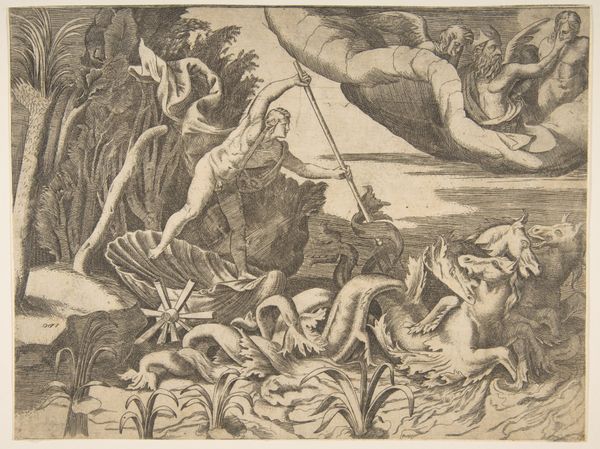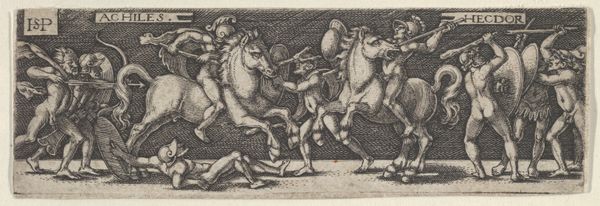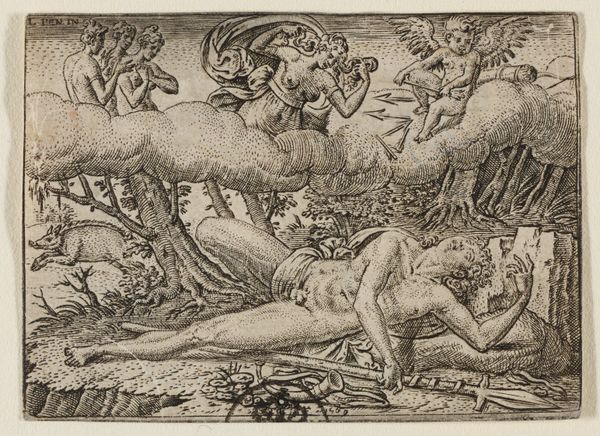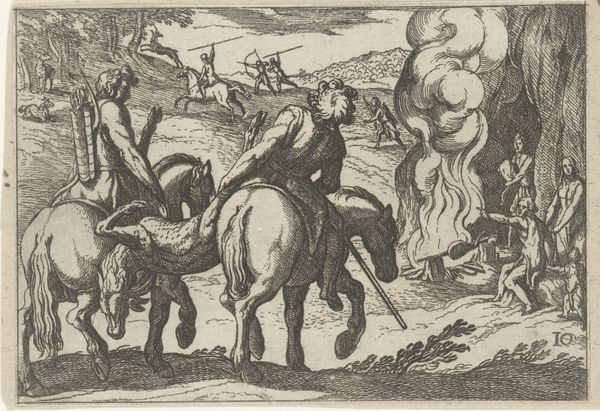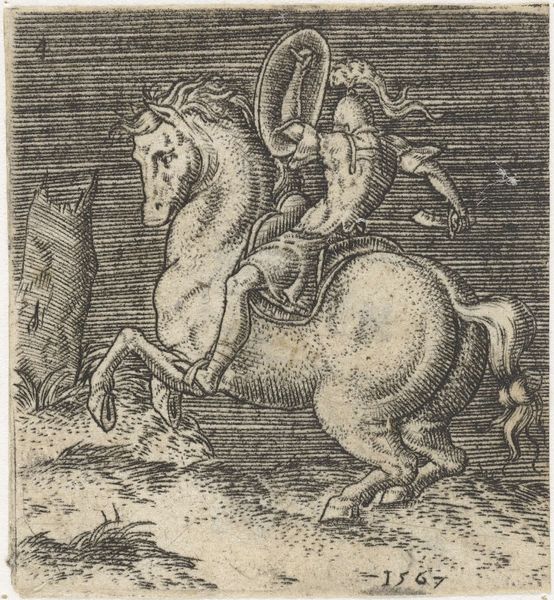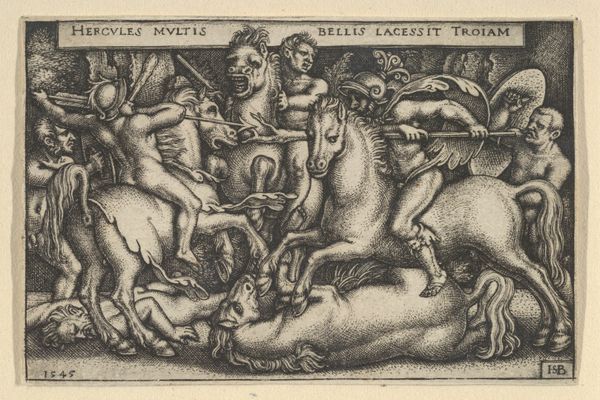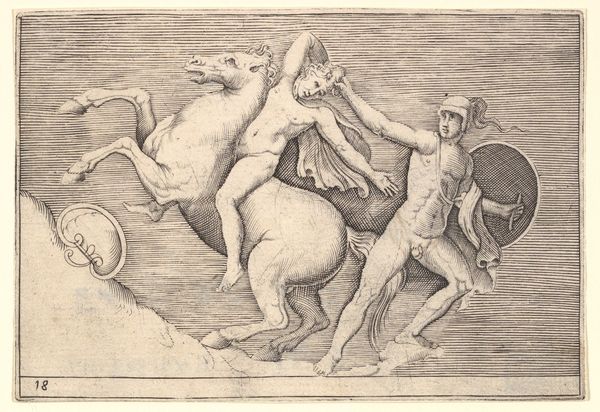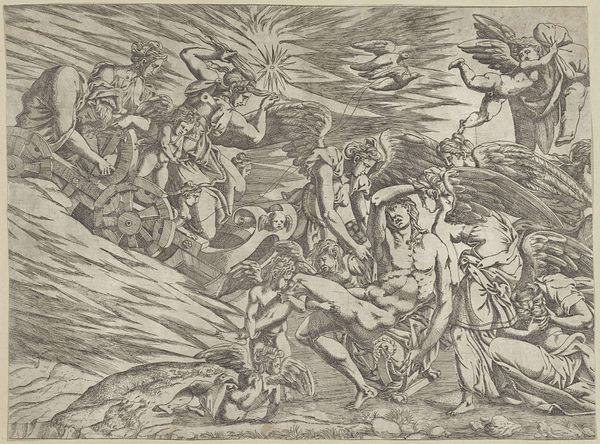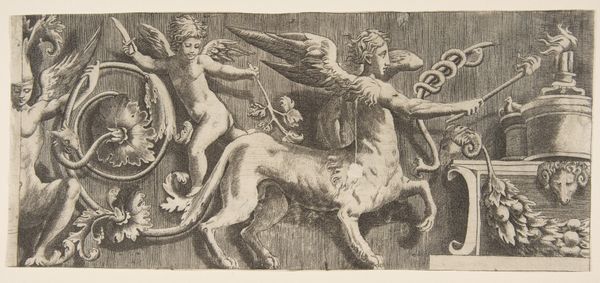
print, engraving
# print
#
figuration
#
ancient-mediterranean
#
genre-painting
#
history-painting
#
italian-renaissance
#
nude
#
engraving
Dimensions: sheet: 2.8 x 6.1 cm (1 1/8 x 2 3/8 in.)
Copyright: National Gallery of Art: CC0 1.0
Editor: This is *The Triumph of Neptune* by Peregrino da Cesena, made sometime between 1490 and 1510. It’s an engraving, and what immediately strikes me is how dynamic it is! The horses pulling Neptune's chariot are so energetic. How do you interpret this piece in its historical context? Curator: Considering the Renaissance fascination with classical antiquity, this engraving showcases a clear interest in reviving and reinterpreting Greco-Roman mythology. Think about the socio-political implications of visually embracing narratives where a god triumphs: How might this piece, and others like it, function as a statement about power? Editor: It's interesting that you frame it as a potential statement of power. I hadn't considered that directly. Curator: Well, who commissioned it? Who was the intended audience? Remember, during the Renaissance, art wasn't merely decorative; it served specific purposes, reinforcing societal structures, ideals, and sometimes, even propagandistic messages. Also, how does the act of engraving, itself—its reproducibility— affect the reception and circulation of such a potentially politically-charged image? Editor: That’s a great point. Because it's a print, it could be distributed more widely and have a larger impact on shaping public perception. Curator: Exactly! And beyond its socio-political function, consider how the portrayal of Neptune, with his trident and powerful steeds, reinforces established narratives of male dominance. Who is allowed power, according to the piece, and on what grounds is this power granted? Editor: So, seeing it as more than just a classical scene helps unpack potential power dynamics and the impact on a wider audience through printmaking. Thank you. Curator: Indeed. Looking at art as a product and a producer of history helps us see its multifaceted roles within society.
Comments
No comments
Be the first to comment and join the conversation on the ultimate creative platform.
